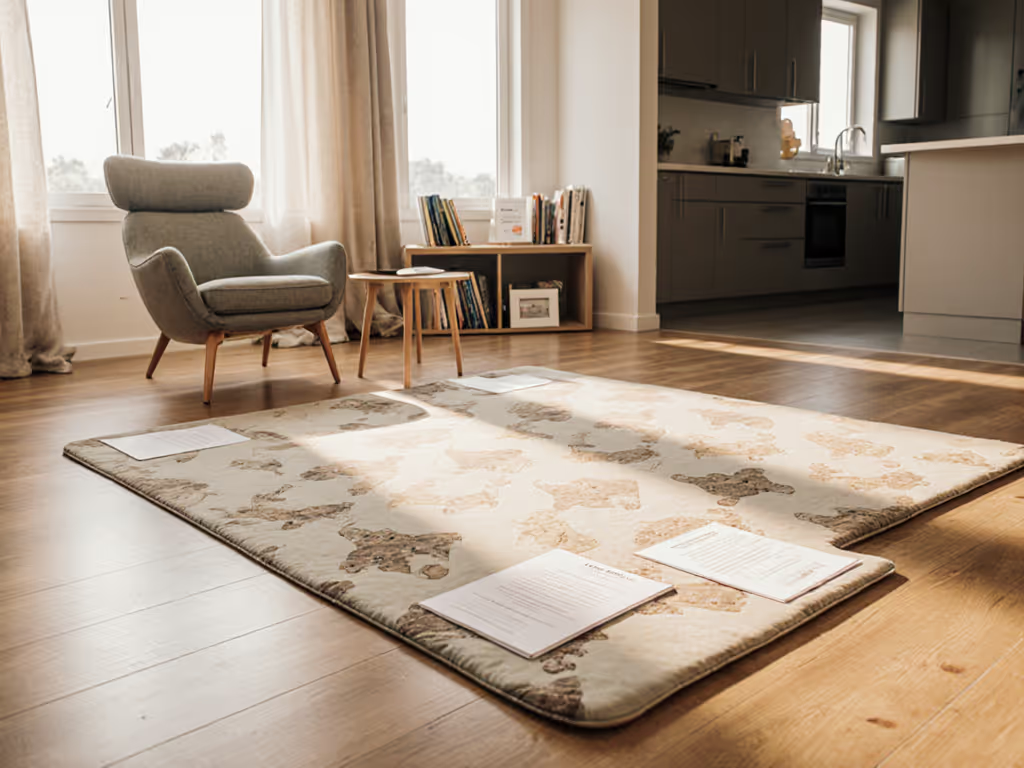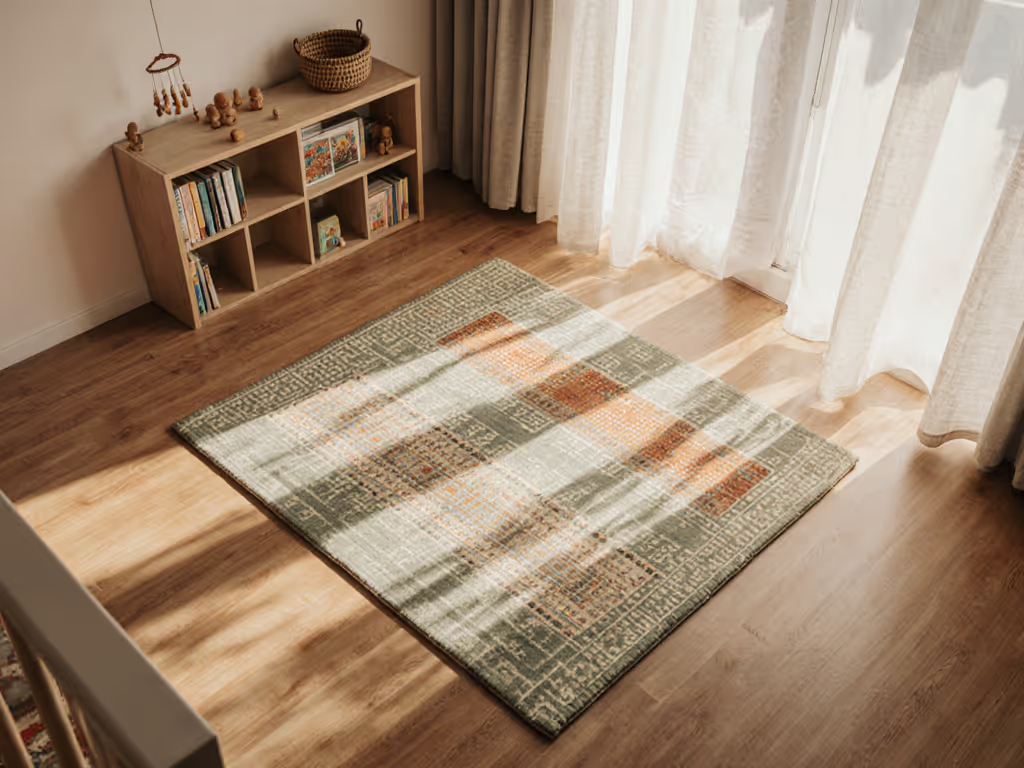
Understanding Safety Standards for Play Mats
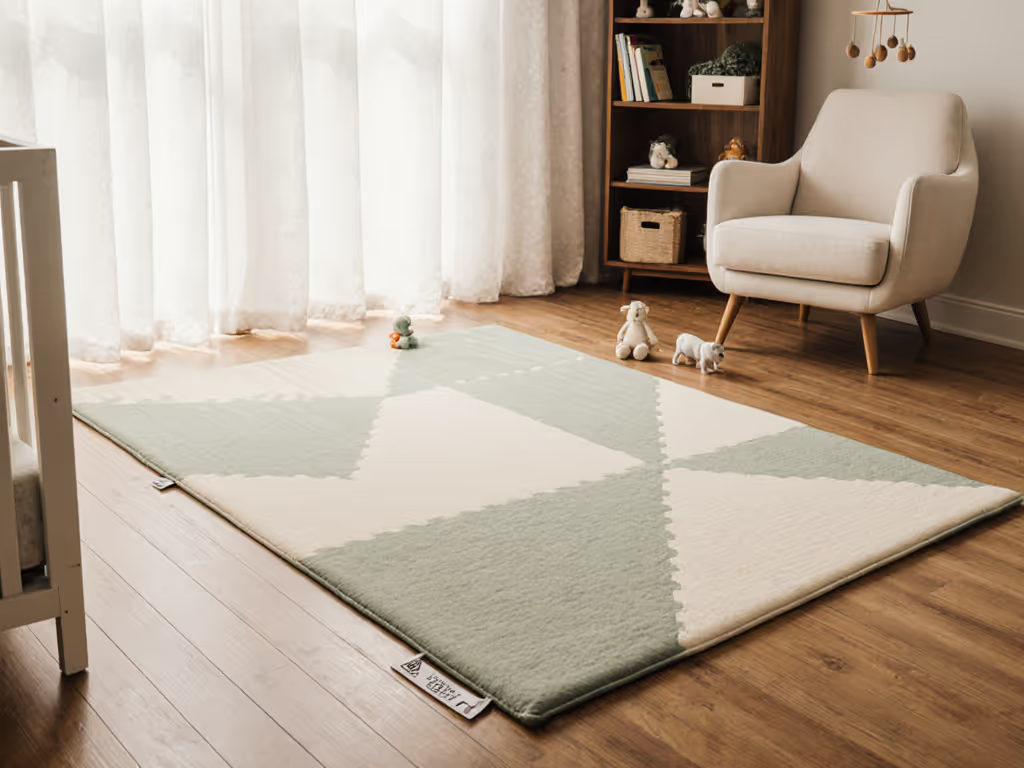
Understanding Safety Standards for Play Mats

Play mats are everywhere in homes with babies. Parents rely on them for safe tummy time and play, thinking they are a harmless part of childhood. Yet studies show that some play mats have been found to contain harmful chemicals linked to developmental delays and long-term health issues. You might expect the biggest worry is tripping over a colorful mat left on the floor, but the real risk can come from what you cannot see or smell.
Table of Contents
- What Are Play Mats And Their Importance For Children?
- Why Safety Standards For Play Mats Matter
- Key Safety Standards And Regulations For Play Mats
- Materials And Design Factors Affecting Safety
- Evaluating Play Mats: What Parents Should Consider
Quick Summary
| Takeaway | Explanation |
|---|---|
| Choose non-toxic play mats | Select play mats made from hypoallergenic and safe materials to protect children's health. |
| Check safety certifications | Verify that play mats meet rigorous safety standards to ensure durability and prevent injury. |
| Prioritize thickness and cushioning | Ensure the mat provides adequate padding to cushion falls and support developmental milestones. |
| Evaluate for developmental support | Look for features that enhance motor skills, sensory engagement, and adaptability to growth stages. |
| Maintain cleanliness and hygiene | Select mats that are easy to clean and resistant to bacteria and fungi for safe play environments. |
What Are Play Mats and Their Importance for Children?
Play mats are specialized floor coverings designed specifically to create safe, comfortable, and stimulating environments for infants and young children. These essential developmental tools serve multiple critical functions beyond simple floor protection, acting as foundational spaces where children begin exploring movement, sensory experiences, and early learning.
Understanding Play Mat Basics
At their core, play mats provide a dedicated surface that supports a child's physical and cognitive development. Crafted from materials like foam, rubber, or soft textiles, these mats create padded zones that cushion babies during critical developmental stages such as rolling, crawling, and early walking. Learn more about developmental play spaces that transform these simple floor coverings into interactive learning environments.
Play mats offer several key benefits for children's growth:
- Provide a clean, safe surface for infant play and exploration
- Cushion potential falls and protect against hard floor impacts
- Create sensory stimulation through textures, colors, and interactive elements
Safety and Developmental Significance
Beyond physical protection, play mats play a crucial role in child development. According to pediatric research from Stanford University, dedicated play spaces help infants develop motor skills, spatial awareness, and sensory processing capabilities. These specialized surfaces encourage babies to experiment with movement, supporting muscle development and coordination.
The safety standards for play mats are paramount. Parents must ensure these surfaces are free from harmful chemicals, have adequate cushioning, and provide stable support for emerging physical skills. Choosing the right play mat means selecting a product that meets rigorous safety criteria while offering an engaging environment for childhood exploration and learning.
Why Safety Standards for Play Mats Matter
Safety standards represent critical protective measures that ensure play mats meet rigorous quality and health requirements designed to safeguard children during their most vulnerable developmental stages. Explore our comprehensive non-toxic play mat safety checklist to understand the intricate details behind these crucial protective guidelines.
Chemical and Material Safety Concerns
Play mats interact directly with infants and young children who are physiologically more susceptible to chemical exposures. According to research from the National Institutes of Health, certain materials can potentially release harmful substances like phthalates, volatile organic compounds (VOCs), and heavy metals. These chemicals pose significant risks including developmental delays, neurological impacts, and potential long-term health complications.
Key chemical safety considerations include:
- Avoiding materials containing known toxic substances
- Selecting play mats with third-party certifications
- Prioritizing products made from hypoallergenic materials
Physical Safety and Structural Integrity
Beyond chemical considerations, safety standards address the physical design and structural components of play mats. Proper manufacturing guidelines ensure these surfaces provide adequate cushioning, maintain structural stability, and resist tearing or degradation. Rigorous testing protocols evaluate factors like impact absorption, material durability, and resistance to potential hazards.
Parents must recognize that safety standards protect children from potential injuries by mandating specific design requirements.
This table summarizes the main chemical and physical safety concerns parents should consider when selecting a play mat and describes their significance.
| Safety Concern | Explanation |
|---|---|
| Toxic chemical content | Risks include exposure to phthalates, VOCs, and heavy metals |
| Inadequate cushioning | Insufficient padding may lead to injury from falls or impacts |
| Material degradation | Poor-quality mats can tear, increasing choking or ingestion risks |
| Poor resistance to bacteria/fungi | Surfaces prone to microbial growth can compromise child health |
| Lack of certifications | Absence of verified testing raises concerns over overall product safety |
The implementation of comprehensive safety standards transforms play mats from simple floor coverings into carefully engineered protective environments. By adhering to these meticulous guidelines, manufacturers create products that support healthy child development while minimizing potential health and safety risks.
Key Safety Standards and Regulations for Play Mats
Safety standards and regulations for play mats represent comprehensive frameworks designed to protect children from potential hazards during critical developmental stages. Learn more about our safety and care guidelines to understand the intricate protective measures that safeguard infant play environments.
International Safety Certification Standards
Play mat safety regulations encompass multiple critical domains, with ASTM International F1917 standards serving as a primary benchmark for child-focused floor coverings. These rigorous guidelines establish precise requirements for material composition, chemical safety, physical durability, and potential impact resistance.
Key international safety certification criteria include:
The table below compares key international safety certification criteria for play mats and explains how each ensures child protection.
| Certification Criterion | Purpose | How It Protects Children |
|---|---|---|
| Material toxicity screening | Identifies and excludes hazardous substances | Reduces exposure to toxic chemicals |
| Flammability resistance | Tests material behavior under fire conditions | Lowers risk of burns or inhalation |
| Structural integrity | Evaluates material strength and durability | Prevents tearing and choking hazards |
| Age-appropriate design | Ensures products fit children’s developmental stages | Improves developmental support and safety |
| Chemical composition analysis | Examines for prohibited or dangerous chemical compounds | Protects against allergens and toxins |
- Material toxicity screening
- Flammability resistance testing
- Structural integrity evaluations
- Age-appropriate design specifications
- Chemical composition analysis
Regulatory Compliance and Testing Protocols
Manufacturers must navigate complex regulatory landscapes to ensure play mat safety. Comprehensive testing protocols involve multiple stages of evaluation, including chemical composition analysis, mechanical stress assessments, and long-term durability examinations. Independent laboratories conduct exhaustive tests to verify compliance with international safety standards, examining factors such as potential chemical leaching, material degradation, and structural stability.
Beyond technical specifications, these standards address critical developmental considerations. Regulatory frameworks mandate that play mats provide safe, non-toxic surfaces that support infant exploration while minimizing potential health risks. This holistic approach ensures that seemingly simple floor coverings meet stringent safety criteria designed to protect children's physical and neurological development.
Materials and Design Factors Affecting Safety
Play mat safety extends far beyond surface aesthetics, encompassing intricate material selections and design considerations that directly impact child health and developmental protection. Learn about the detailed materials tested in baby play mats to understand the complexity behind these critical choices.
Chemical Composition and Material Selection
Material composition represents the foundational element of play mat safety. According to research published in environmental health journals, certain foam materials may contain potentially harmful chemicals like formamide, which can pose significant health risks to developing children. Responsible manufacturers must prioritize non-toxic, hypoallergenic materials that minimize chemical exposure.
![]()
Key material safety considerations include:
- Selecting materials free from heavy metals
- Avoiding known carcinogenic compounds
- Choosing low volatile organic compound (VOC) materials
- Ensuring hypoallergenic material compositions
- Prioritizing food-grade and medical-standard materials
Structural Design and Physical Safety Parameters
Beyond chemical considerations, play mat design directly influences physical safety. Critical design factors include precise foam density, edge reinforcement, surface texture, and impact absorption capabilities. Engineers must carefully calibrate these elements to create surfaces that protect against potential injuries while supporting natural childhood movement and exploration.
The interaction between material properties and design specifications determines a play mat's overall safety profile.
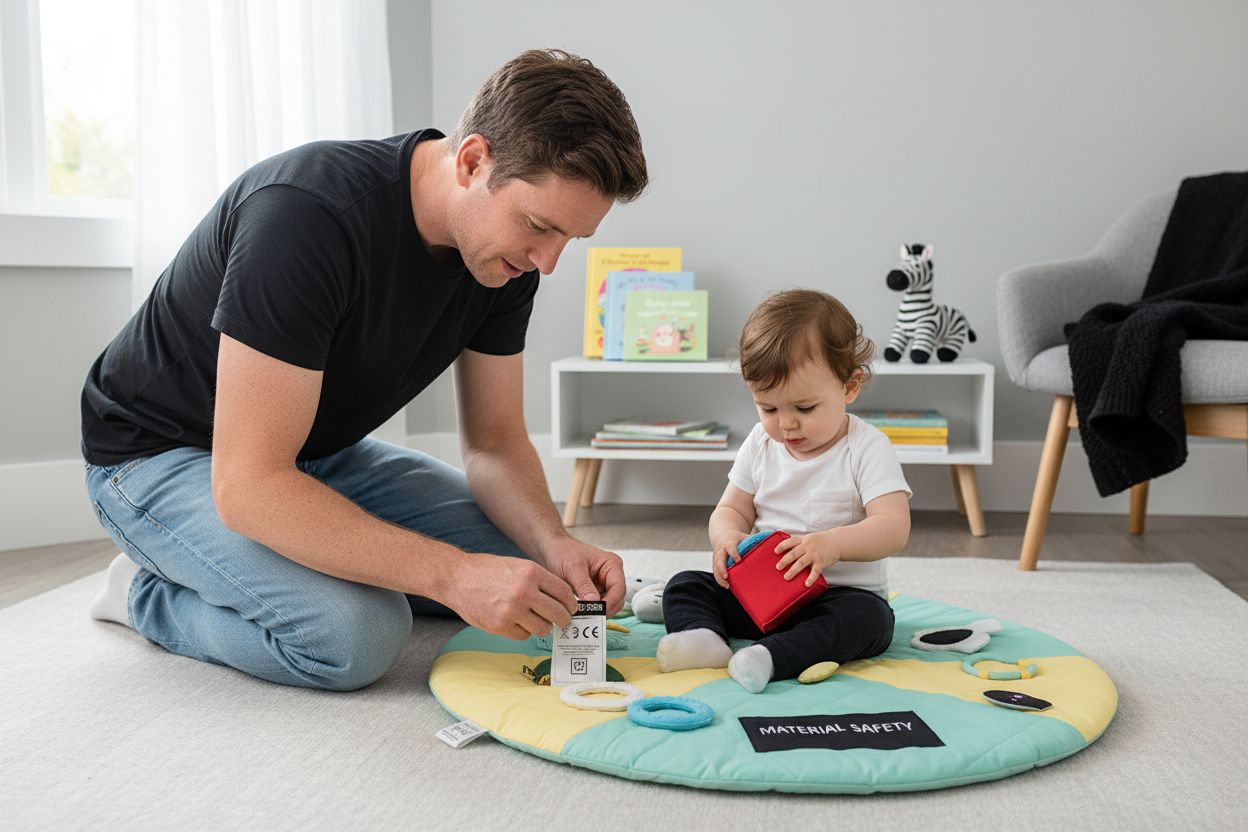 Factors like thickness, density, flexibility, and surface uniformity contribute to impact resistance and injury prevention. Manufacturers must conduct extensive testing to ensure that play mats can withstand typical childhood interactions without compromising structural integrity or introducing potential hazards.
Factors like thickness, density, flexibility, and surface uniformity contribute to impact resistance and injury prevention. Manufacturers must conduct extensive testing to ensure that play mats can withstand typical childhood interactions without compromising structural integrity or introducing potential hazards.
Evaluating Play Mats: What Parents Should Consider
Selecting the right play mat requires comprehensive evaluation beyond aesthetic appeal, demanding careful analysis of multiple safety and developmental factors. Discover the right play mat type for every developmental stage to make an informed decision that supports your child's growth.
Critical Safety Assessment Criteria
Parents must conduct thorough investigations into play mat characteristics, examining factors that extend well beyond surface-level considerations. According to pediatric developmental research, key evaluation parameters include material composition, age-appropriate design, and potential developmental support mechanisms.
Comprehensive safety assessment criteria encompass:
- Verified non-toxic material certifications
- Appropriate thickness for impact absorption
- Seamless construction without potential pinch points
- Resistance to bacterial and fungal growth
- Ease of cleaning and maintenance
Developmental Compatibility and Long-Term Usability
Beyond immediate safety concerns, parents should evaluate play mats through a developmental lens. An ideal play mat adapts to a child's evolving physical capabilities, providing appropriate support during critical developmental transitions from infant immobility to active toddler exploration.
Considerations for developmental compatibility include assessing mat features that support progressive motor skill development, sensory engagement, and age-appropriate interaction. Optimal play mats function as dynamic learning environments that can be reconfigured or updated to match a child's changing physical and cognitive needs, transforming from a simple protective surface to an interactive developmental tool.
Discover Safer Play Mat Choices for Every Family
Choosing the right play mat is about more than just floor protection. As parents, you worry about toxic materials, hidden safety risks, and whether your child's play space truly supports healthy development. Our article explored how strict safety standards for play mats are essential to your child's well-being, from chemical-free materials to sturdy construction that prevents accidental injuries. If the complexity of regulations, certifications, and material testing feels overwhelming, you are not alone. Many families struggle to find a beautiful, safe, and long-lasting play mat for every stage of childhood.
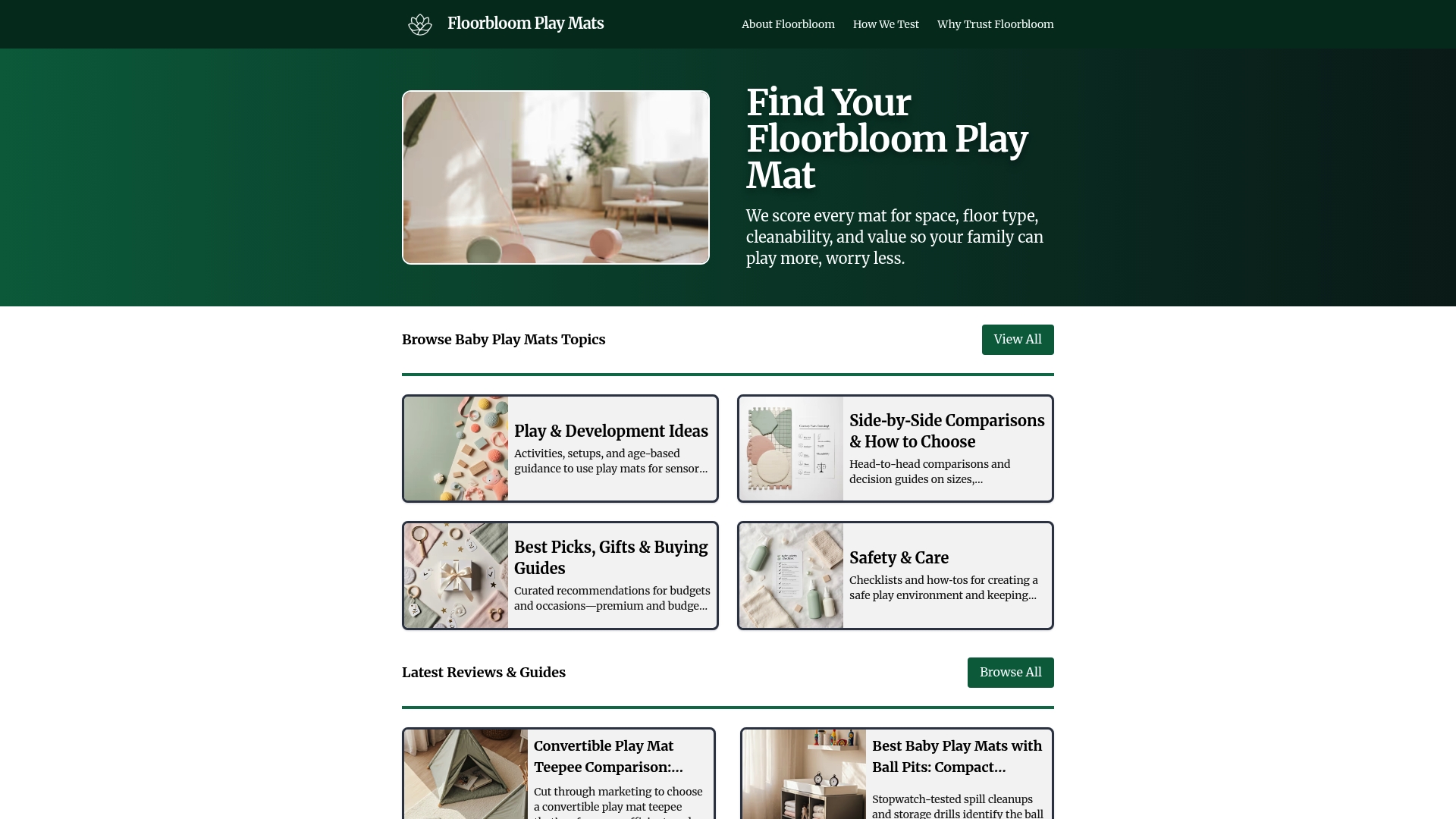
At Floor Bloom, we simplify your search by combining industry-leading safety standards with real-home guidance. Each play mat is rigorously tested and transparently certified, helping you feel confident about what your child touches every day. Want more details before you buy? Visit our non-toxic play mat safety checklist or explore our comprehensive safety and care resources. Ready to give your family lasting peace of mind and a stunning, safe play space? Find your perfect mat now before stocks run out and start creating a safer home today.
Frequently Asked Questions
What safety standards should I look for in play mats?
To ensure the safety of a play mat, look for compliance with ASTM International F1917 standards, which cover material safety, chemical composition, and structural integrity. Start by verifying certifications on the packaging or product description.
How can I assess the chemical safety of a play mat?
Evaluate the chemical safety by checking for third-party certifications that confirm the absence of harmful substances like phthalates and heavy metals. Select products that have undergone rigorous testing for contaminants to protect your child's health.
What physical safety features are important in a play mat?
Important physical safety features include proper thickness for impact absorption, seam construction without potential pinch points, and a textured surface for better grip. Measure the mat's thickness and check design details to ensure it meets necessary safety criteria.
How do I determine if a play mat is suitable for my child's developmental stage?
Determine suitability by evaluating the play mat's design features that support different developmental milestones, such as crawling or standing. Choose a mat that encourages sensory engagement and motor skills appropriate for your child's current abilities, adjusting as they grow.
What should I consider for long-term use of a play mat?
For long-term use, consider durability, ease of cleaning, and adaptability to your child’s developing skills. Opt for mats that are easy to maintain and can support your child's growth from infancy to toddlerhood, providing a safe space for play and exploration.
How do safety standards protect children during playtime?
Safety standards protect children by ensuring that play mats are free from toxic chemicals and structurally sound to prevent injuries. Familiarize yourself with regulations that require testing for material quality and safety to ensure a safe play environment.
Recommended
Related Articles


What Is a Foldable Play Mat? Complete Guide
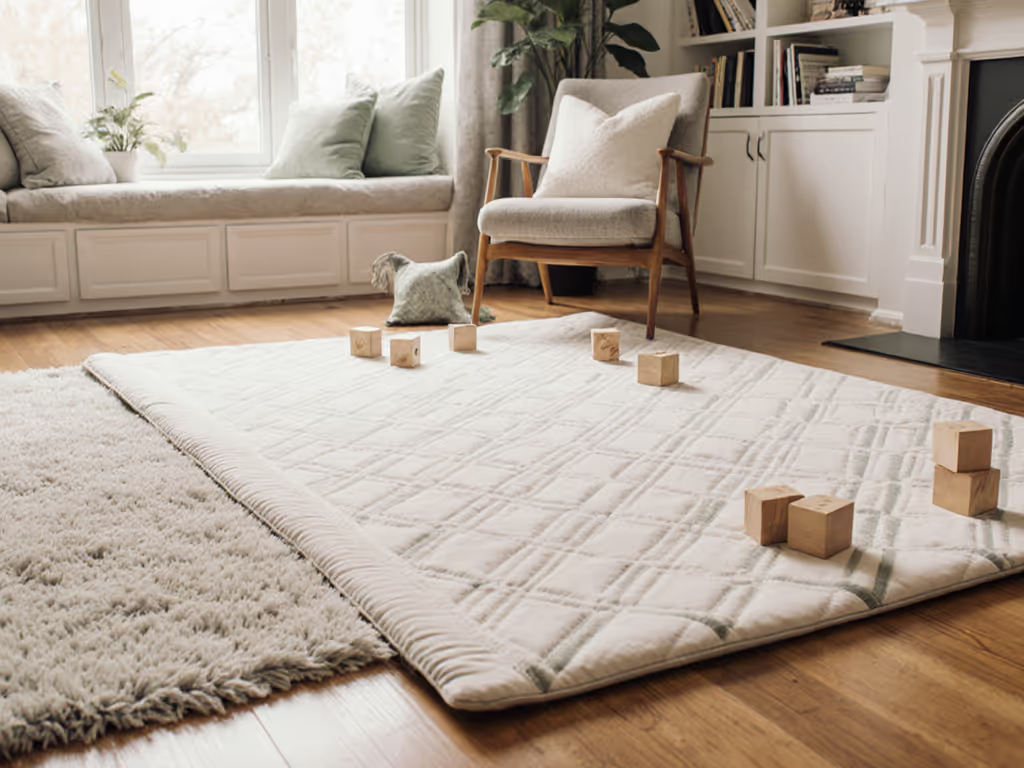
Role of Play Mats: Complete Guide for Safe Play Spaces
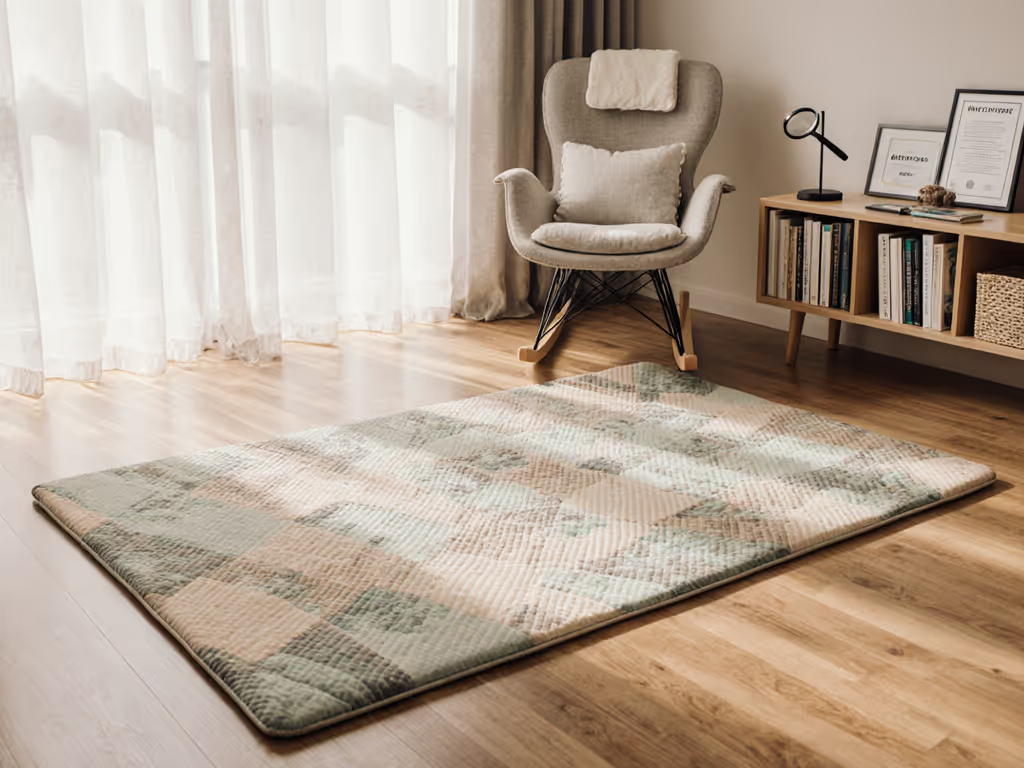
Play Mat Safety Standards Explained: Essential Guide
